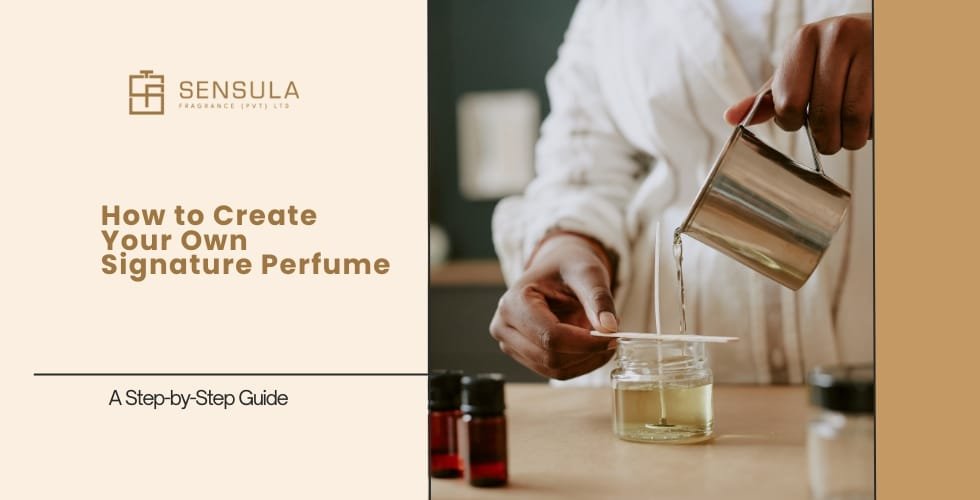Ever dreamed of creating a perfume that reflects your personality and leaves a lasting impression? The art of perfumery blends creativity, science, and personal expression, allowing you to craft a fragrance that’s uniquely yours.
In this guide, we break down 7 essential steps to help you create a signature scent, whether for personal use or a private label fragrance brand.
Step 1: Understand Fragrance Notes and Structure
Perfumes are composed of three types of notes that determine how the scent evolves over time:
- Top Notes – The first impression, typically fresh and citrusy (e.g., bergamot, lemon, mint).
- Middle Notes – The heart of the fragrance, often floral, spicy, or fruity (e.g., jasmine, rose, cinnamon).
- Base Notes – The lasting foundation, usually woody or musky (e.g., sandalwood, vanilla, musk).
Step 2: Choose Your Fragrance Ingredients
To start your perfume-making journey, you’ll need:
- Essential Oils – Natural extracts from flowers, spices, and woods.
- Fragrance Oils – Synthetic scents for longer-lasting perfumes.
- Carrier Oils – Jojoba or sweet almond oil to dilute and blend ingredients.
- Alcohol or Distilled Water – Used as a base for dissolving oils and enhancing scent diffusion.
Step 3: Learn the Art of Blending
Creating the perfect perfume requires careful balancing of top, middle, and base notes. Start with small test batches, experimenting with different combinations to achieve the desired harmony. A standard ratio is:
- 30% Top Notes
- 50% Middle Notes
- 20% Base Notes
Step 4: The Perfume Manufacturing Process
Once you’ve selected your ingredients, follow these steps:
- Sterilize Equipment – Ensure bottles and tools are clean.
- Blend the Oils – Start with the base notes, add the middle, then finish with the top.
- Let It Age – Store the mixture in a dark, cool place for 4-6 weeks to enhance its depth.
- Test and Adjust – Apply small amounts to your skin to evaluate how it develops.
Step 5: Bottle and Store Your Perfume
Use dark glass bottles to preserve the fragrance. Store in a cool, dry place away from sunlight and humidity. Proper storage extends the perfume’s lifespan and maintains its intensity.
Step 6: Private Label Opportunities
If you’re considering launching a perfume brand, private labeling allows you to create custom fragrances under your name. Partnering with an experienced perfume manufacturer like Sensula Fragrance can streamline the process, from formulation to branding and packaging.
Step 7: Create a Unique Brand Identity
For those entering the fragrance industry, storytelling and branding are key. A strong marketing strategy includes:
- Social Media & Influencer Collaborations
- Custom Packaging & Branding
- E-commerce Optimization & Retail Partnerships
Conclusion
Creating your own signature perfume is a journey of self-expression and artistry. By understanding fragrance notes, carefully selecting ingredients, and mastering the blending process, you can craft a scent that reflects your personality or brand identity. Whether you’re making a personal fragrance or launching a perfume business, the key is to experiment, refine, and enjoy the process.
At Sensula Fragrance, we specialize in custom perfume manufacturing for businesses and brands. Whether you’re looking for private-label perfumes, corporate gifts, or signature scents, we offer end-to-end fragrance solutions tailored to your needs.








